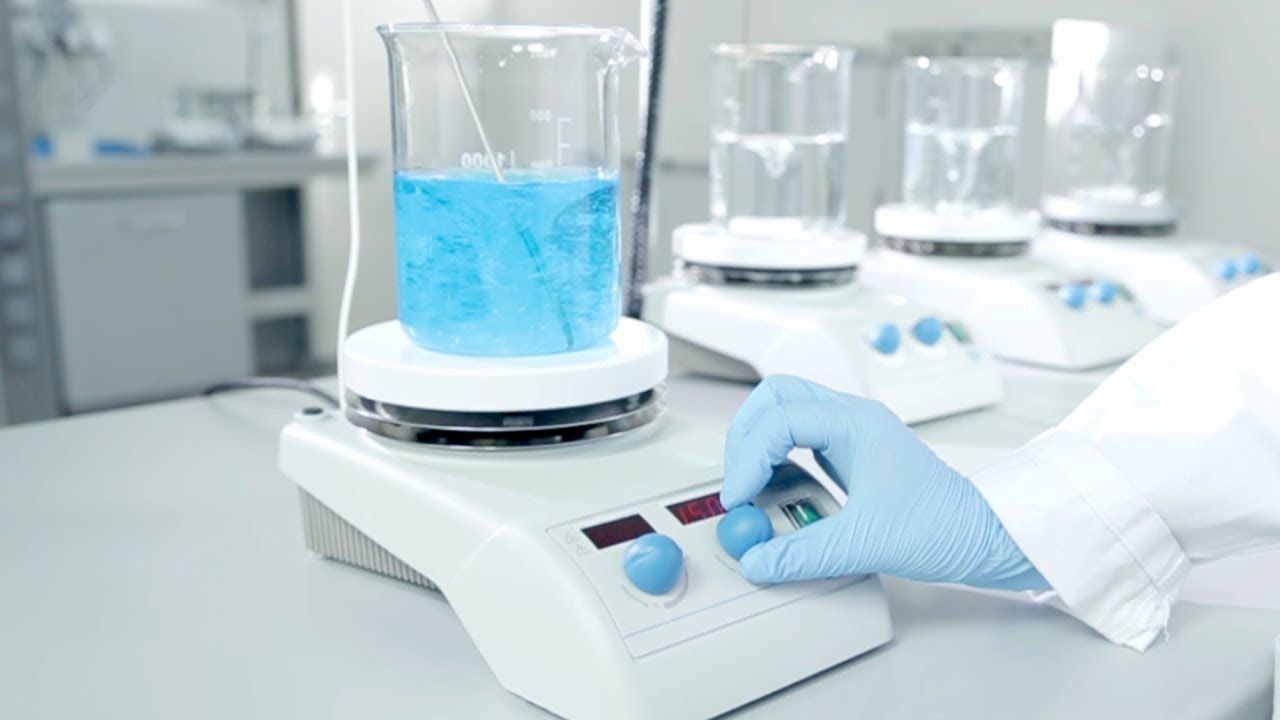Stirrer
All skills about the compressor, magnetic compressor, detailed usage
The article synthesizes complete knowledge about the compressor and magnetic compressor: from configuration, operating principle to practical tools and detailed instructions on how to use effectively
Overview of Stirring Machines
A stirring machine is a device used to evenly mix liquids or mixtures, widely applied in laboratories as well as in the production of chemicals, pharmaceuticals, food, and many other industries. Its operation is based on an impeller attached to a motor, which creates flow to help the components dissolve and disperse uniformly, making it especially suitable for solutions with high viscosity or large volumes.
What is a Magnetic Stirrer?
A magnetic stirrer is commonly seen in laboratories, used to mix solutions through the action of a magnetic field. When a small magnetic stir bar is placed inside a container and the machine is switched on, the rotating magnetic field underneath causes the bar to spin, creating a vortex that mixes the solution evenly.

The biggest advantages of this method are its compact design, safety, and the elimination of manual stirring.
It is particularly useful in experiments involving volatile chemicals or toxic solvents. Instead of direct contact, the user only needs to place the container on the machine and let it handle the entire stirring process.
How to Use a Magnetic Stirrer Correctly
Below, EMIN will guide you on how to properly operate a magnetic stirrer. To begin, place the container on the surface of the machine and drop the stir bar into the solution. When the power switch is turned on, the indicator light will illuminate, confirming the device is in operation. At this stage, you can select the appropriate rotation speed depending on the solution: dilute solutions typically require higher speeds, while viscous solutions should be stirred slowly to prevent splashing.
Some models are equipped with heating functions. When heating is required, simply adjust the temperature knob to the desired level. After completing the process, reduce the speed to the lowest level before switching off the machine and disconnecting the power supply, ensuring longer machine lifespan.
In practice, in many chemical experiments, selecting the correct speed and stir bar can determine the success of the process, so this step should never be overlooked.
Common Types of Magnetic Stirrers
In educational laboratories or basic research, compact stirrers are the most commonly used. These typically handle volumes of 2–3 liters, which is sufficient for small-scale experiments. For example, the IKA C-MAG HS 7, distributed by EMIN, is highly rated for its compact design, stable speed, and durability.
In advanced research labs or pharmaceutical production lines, larger models can handle volumes from 5 to 10 liters, or even more depending on the design. For instance, the AREX Digital Pro heating stirrer, available at EMIN, allows for mixing larger volumes with precise temperature control.
Beyond these two main groups, the market also offers special versions. For laboratories that need to stir multiple samples simultaneously, the VELP AM4 Digital PRO 4-position heating stirrer is a noteworthy option. This device can process four solutions in parallel with stable speed and precise heating, making it ideal for studies that require efficiency and time savings.
In industrial environments, where large and continuous volumes of solutions need to be processed, traditional magnetic stirrers are often insufficient. In such cases, Overhead Stirrers are used instead. At EMIN, you can find several models from DLAB, such as the LED DLAB OS40-S, which supports up to 40 liters of stirring volume, adjustable speeds from 50 to 2200 rpm, and maximum viscosity up to 50,000 mPa·s—ideal for professional settings. Another option is the Witeg HT-120AX, designed for highly viscous solutions up to 150,000 mPa·s. Both are powerful devices that operate reliably in demanding industrial environments.
Structure and Working Principle
For those unfamiliar with its structure, a magnetic stirrer consists of two main components. The mechanical system generates a rotating magnetic field using permanent magnets attached to an electric motor. When this magnetic field is active, the stir bar inside the solution spins accordingly. Alongside this, the electronic system handles control, including speed regulation, temperature adjustment, and sometimes a timer function.
The working principle is straightforward: the rotating magnetic field generates motion, the stir bar spins, and the solution is mixed evenly. This simple yet effective design makes the magnetic stirrer an indispensable tool across many fields of research.
Applications of Magnetic Stirrers
Magnetic stirrers are widely applied in biomedical research, chemistry, pharmaceuticals, agriculture, and industrial production. In laboratories, they are used to mix chemical solutions, prepare solvents, or dissolve solids in liquids without manual effort. In industry, large-scale stirrers improve production efficiency, reduce labor, and ensure product uniformity.
Thanks to their automatic and safe operation, magnetic stirrers have become an essential assistant in modern research and manufacturing.
The above provides complete details about magnetic stirrers, from their definition, proper usage, and structure to common types and real-world applications. It is clear that this device enhances safety and precision in experiments and significantly improves efficiency in industrial production. If you are looking for an effective, convenient, and durable mixing tool, a magnetic stirrer is certainly worth considering.
-
-
-
-
-
-
-
-
-
-
-
-
-
-
-
-
-
-
-
-
-
-
-
-